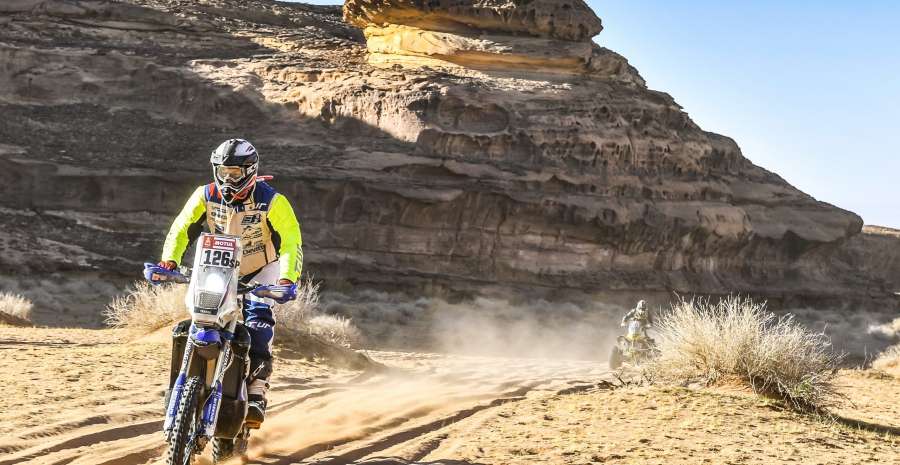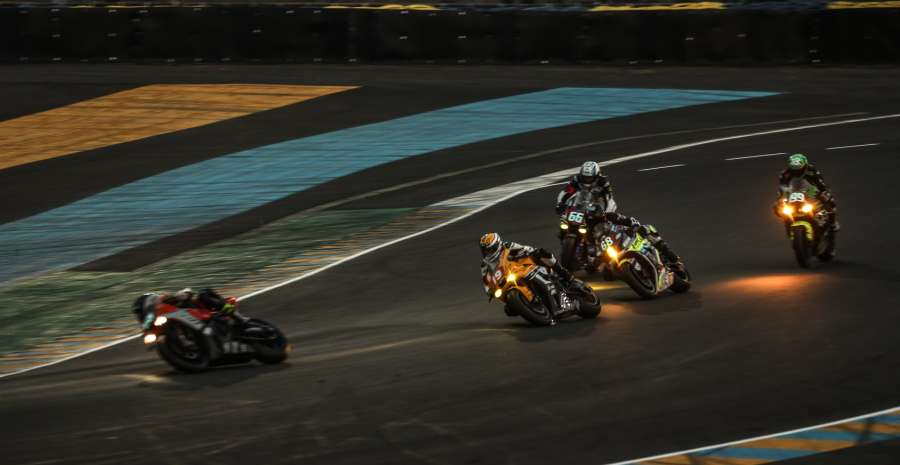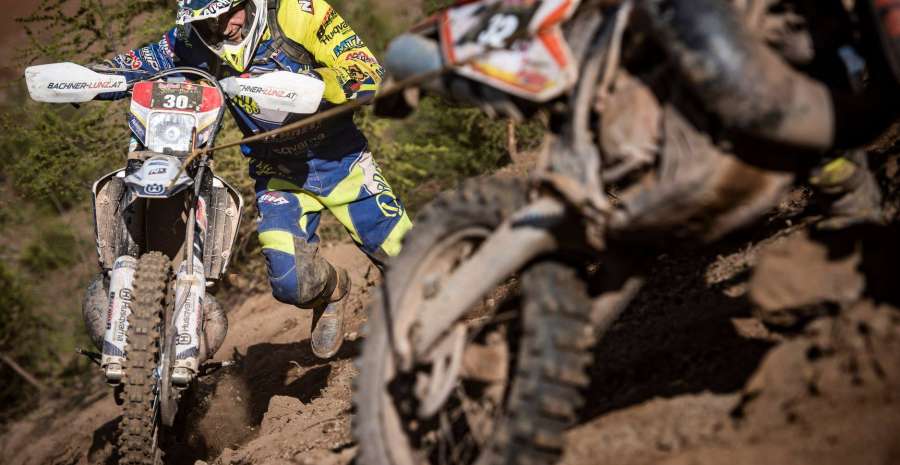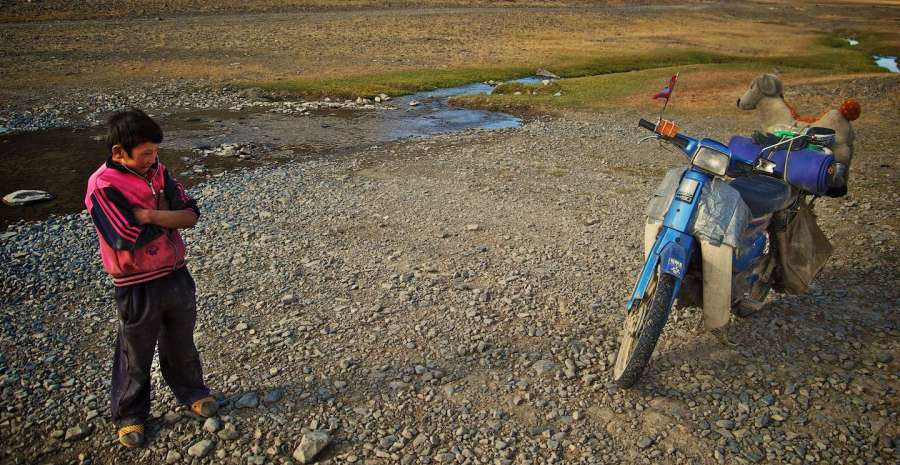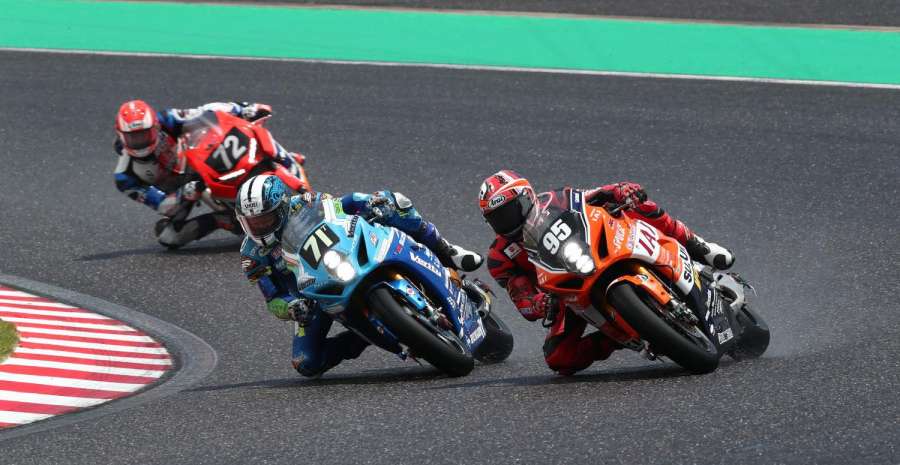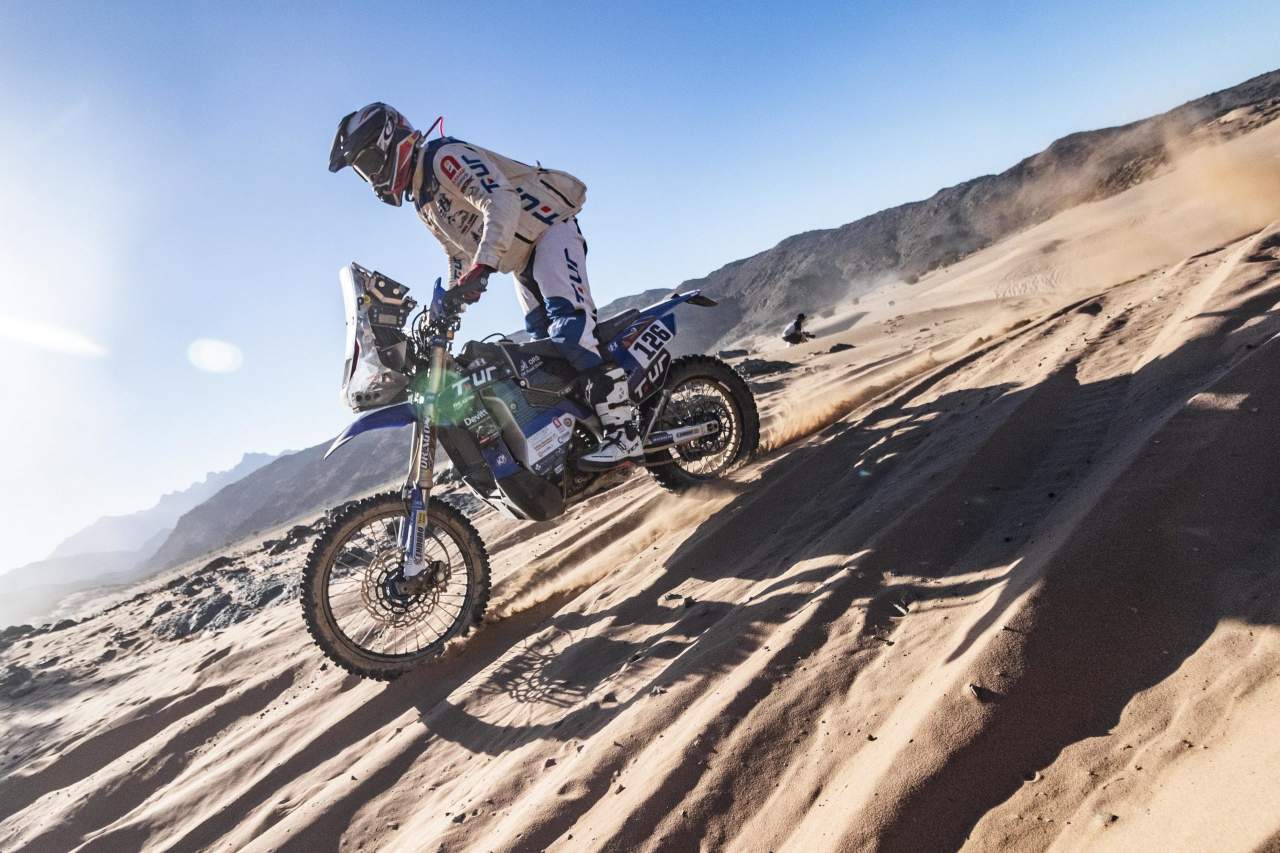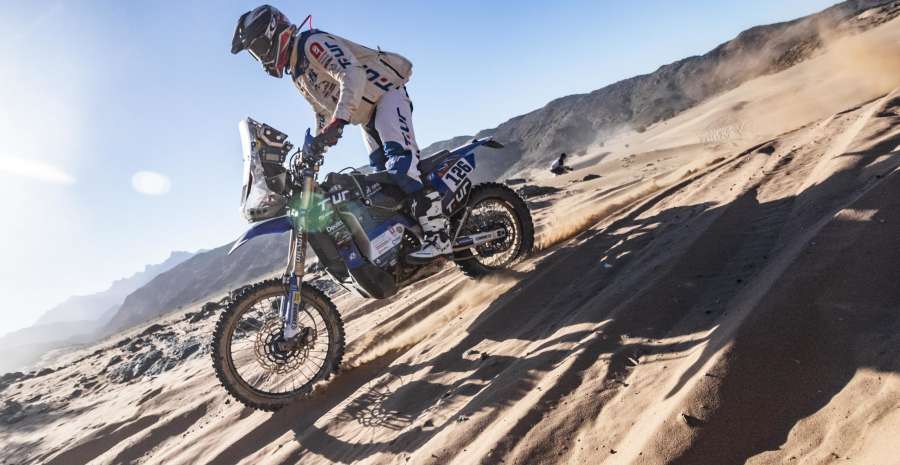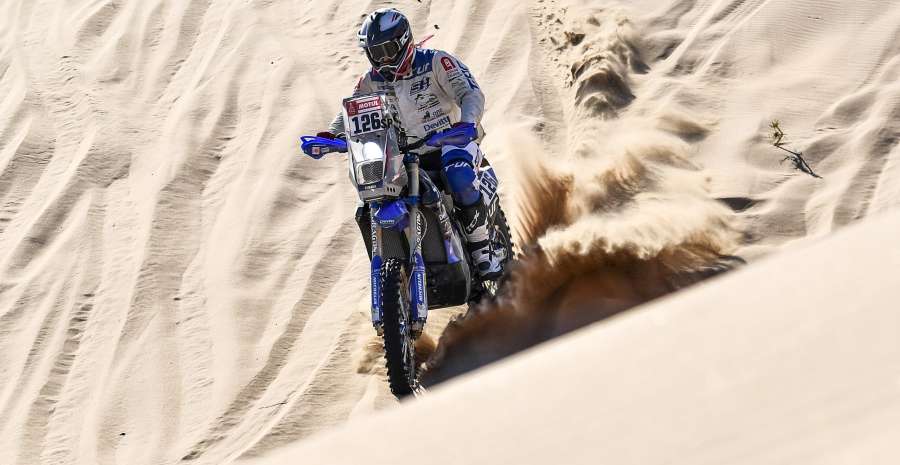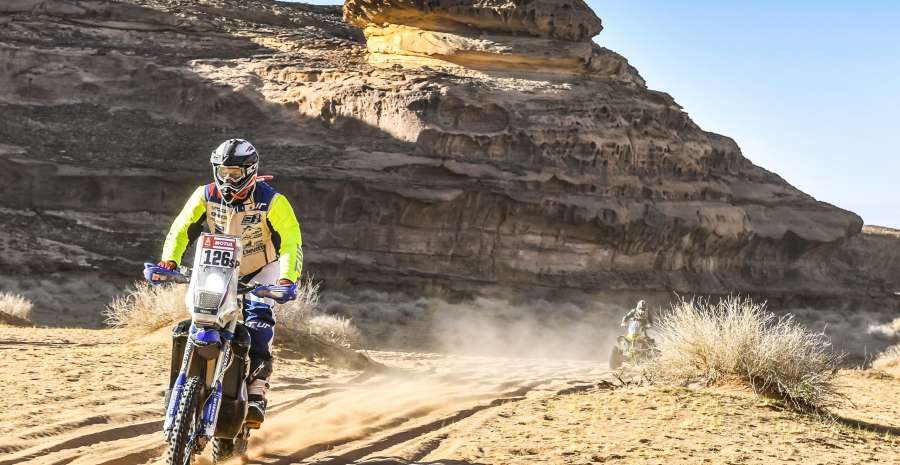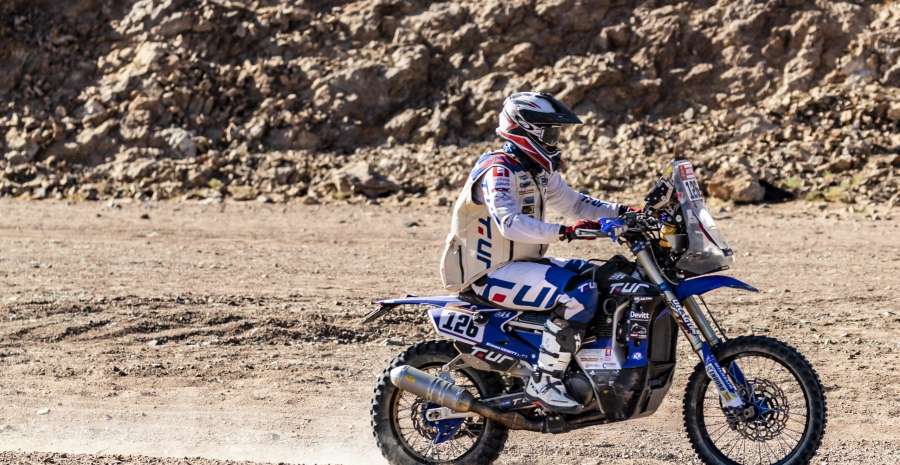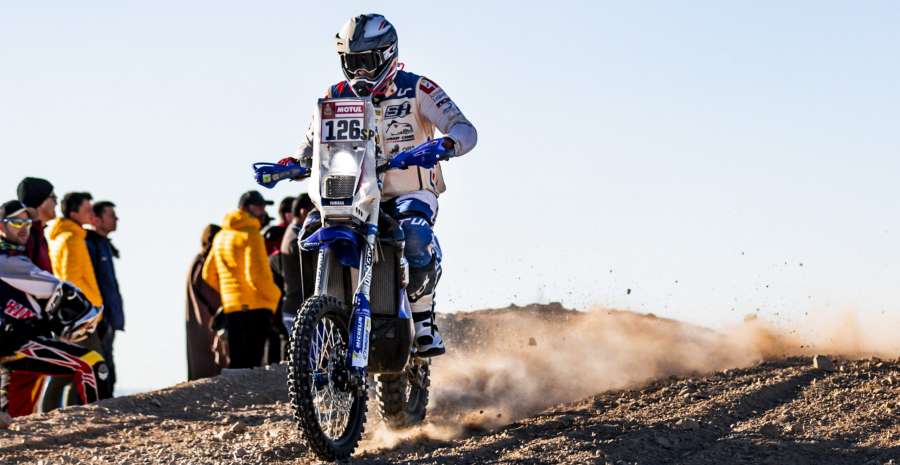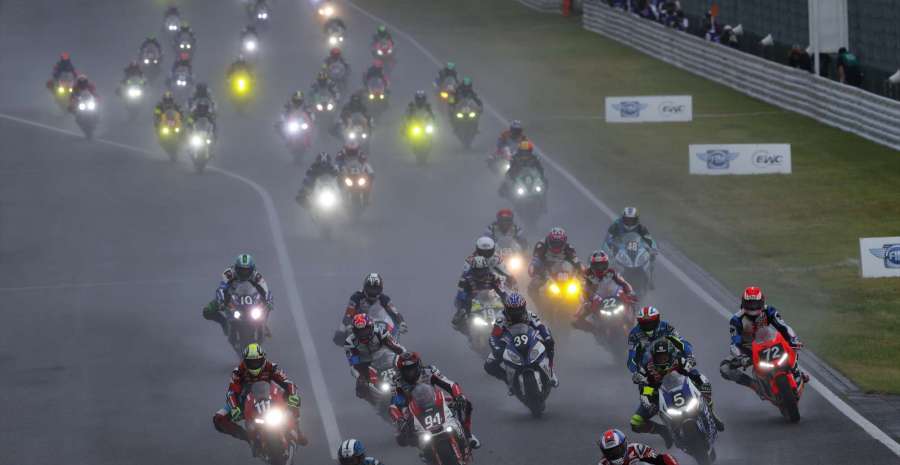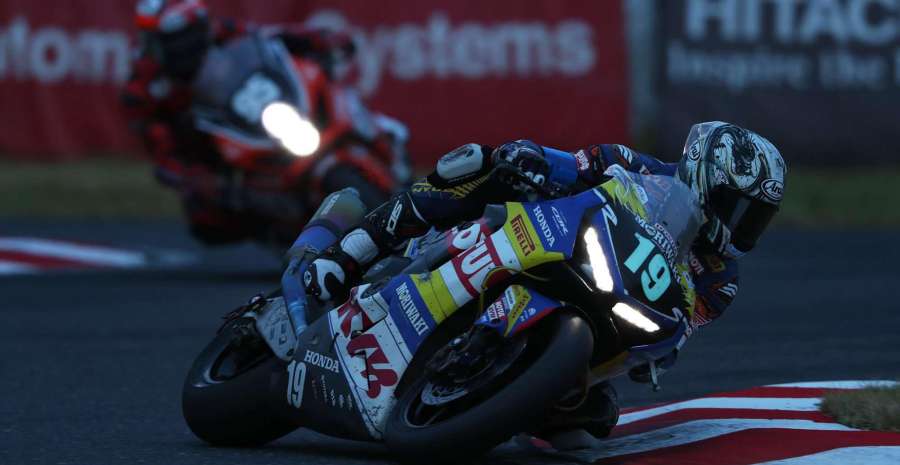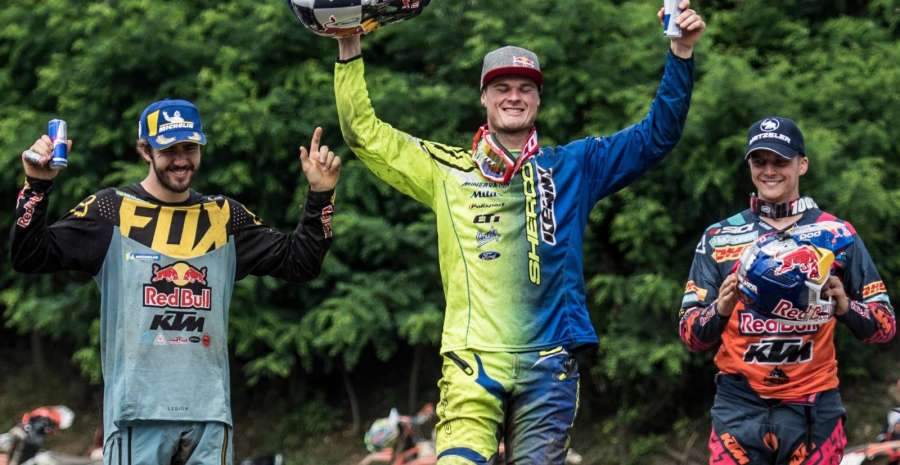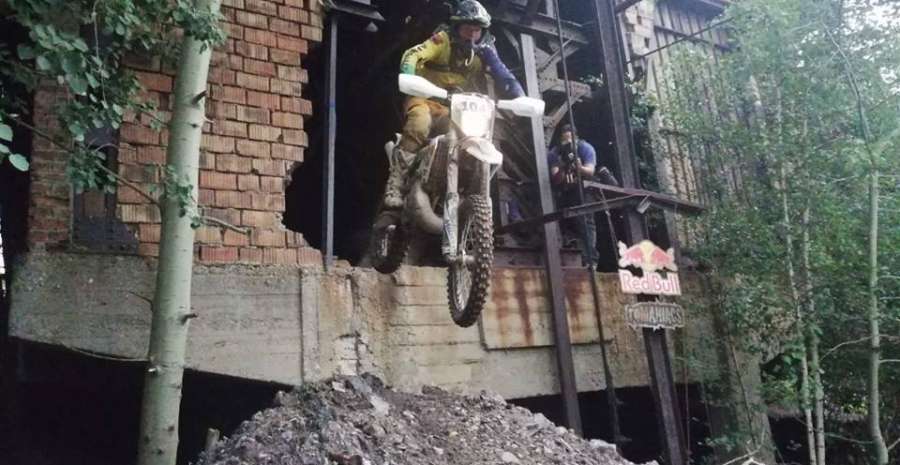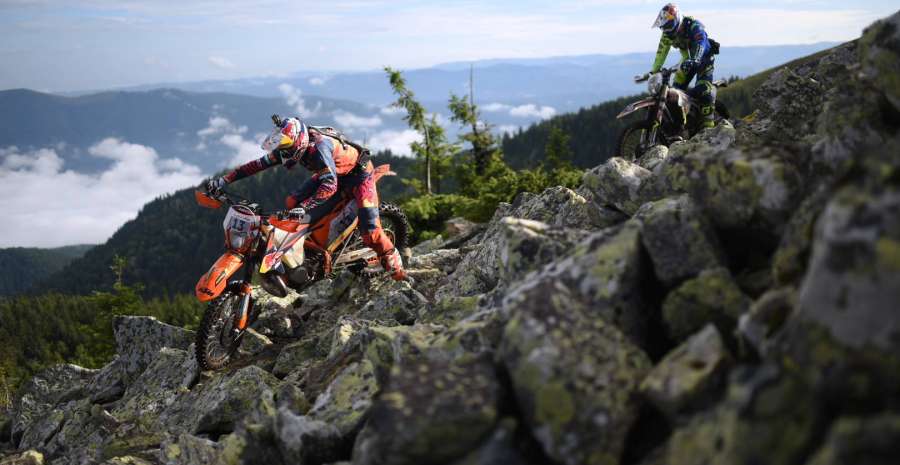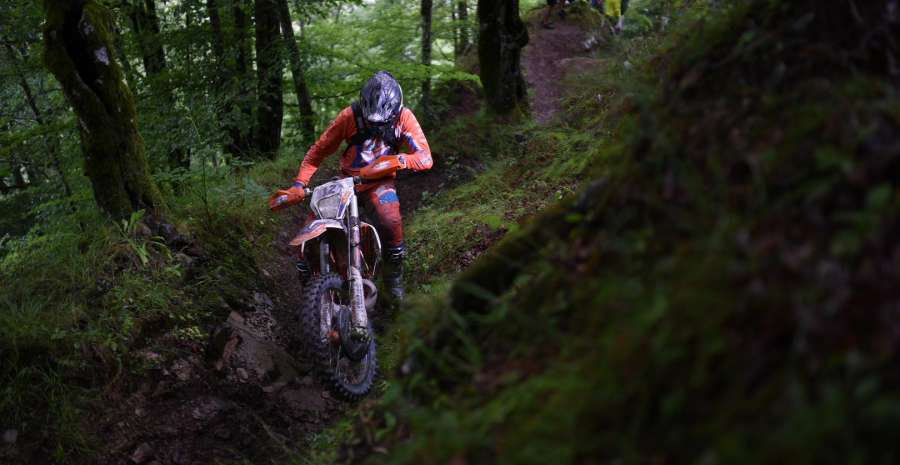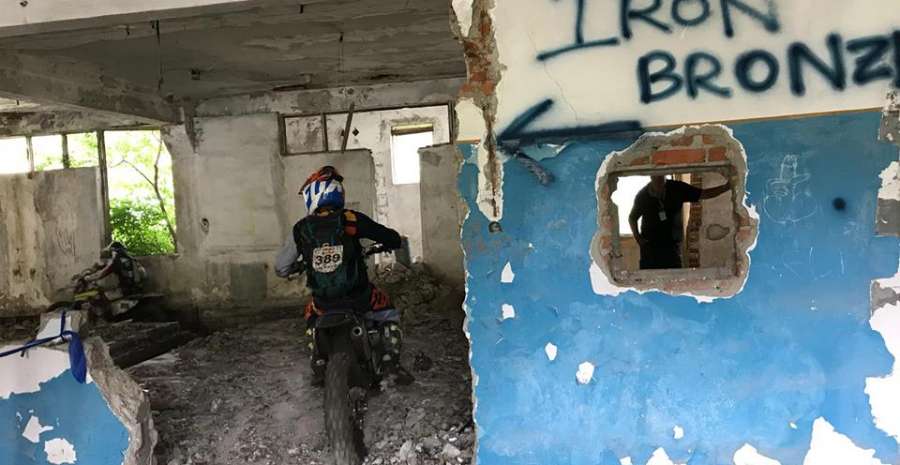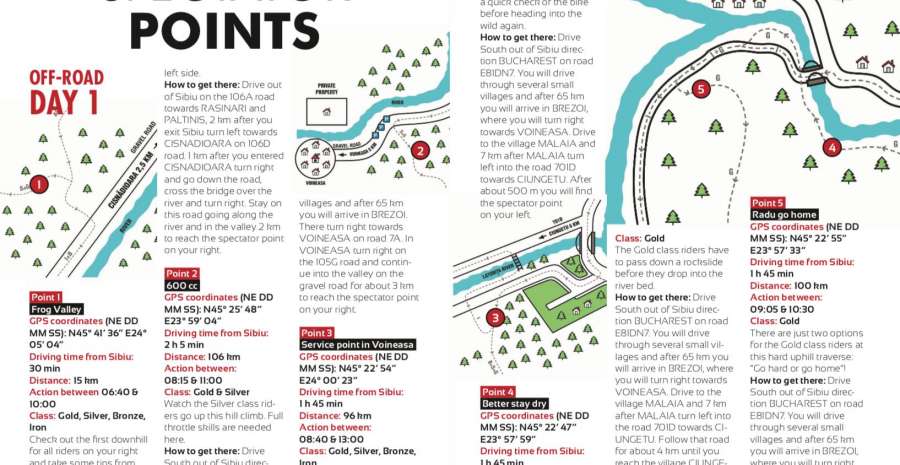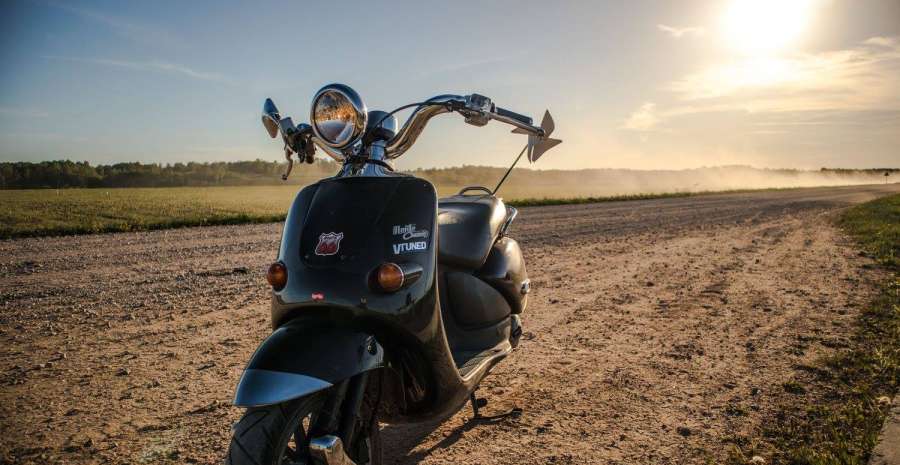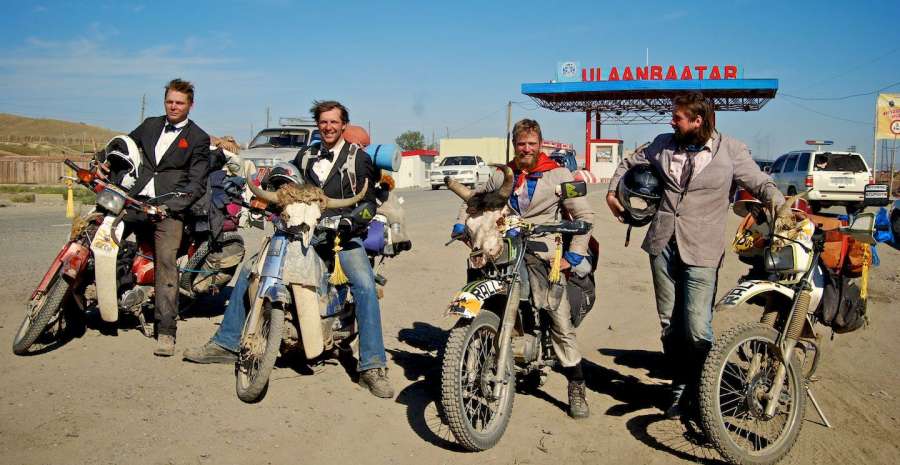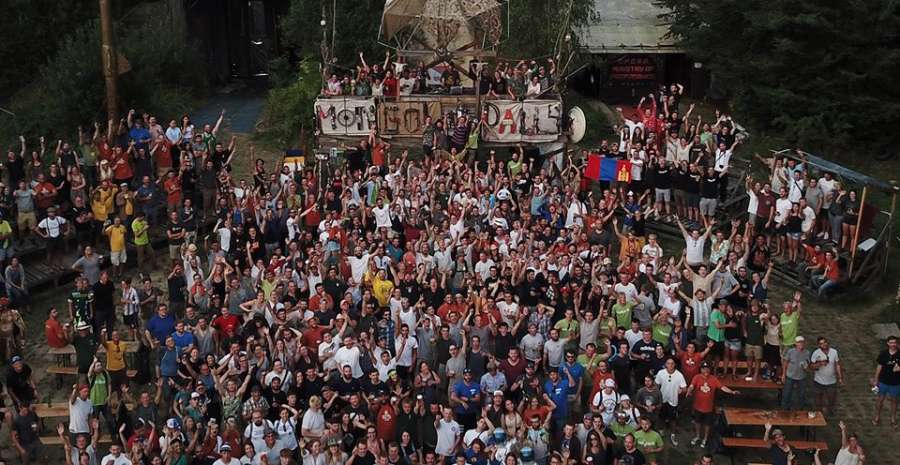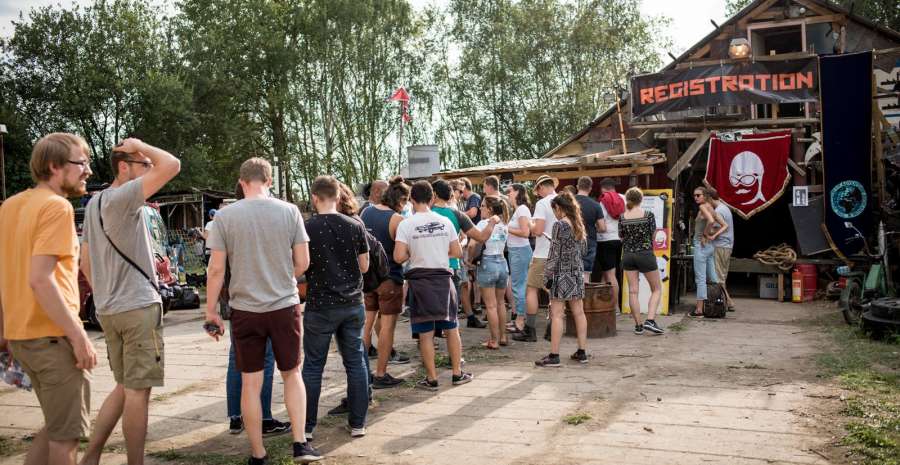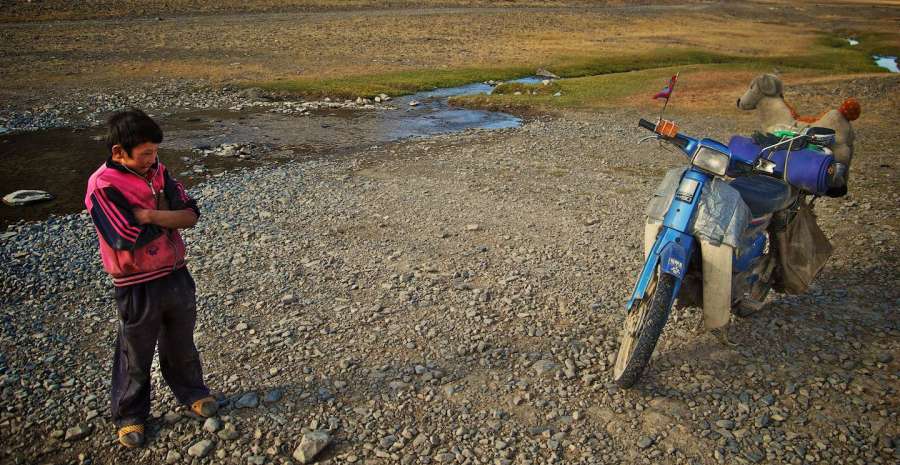Welcome to the world of Motorcycle Endurance Races…
From tracks to roads, the motorcycling world already provides us with so many thrills, it’s pretty clear to see how you can get hooked so easily. The ‘Enduro’ world is just another aspect of biking, it’s all about riders pushing themselves to their mental and physical limits, whilst competing in some of the toughest challenge known to mankind, just because they love to ride.
Here, we have gathered some of the world’s greatest motorcycle endurance races and rallies of all time including the Dakar Rally, Suzuka 8 hours, 24 Hours of Le Mans and the ultimate Red Bull Romaniacs. There’s literally no end to the amount of different rallies and races for bikers, depending on where you live, what you ride and how much time you can dedicate to it – and even if you don’t own a bike but you’re still a big fan, there’s plenty of chances for you to sink your teeth into the action!
If you’re looking to find your next challenge then look no further…
Dakar Rally
History
Organised by the Amaury Sport Organisation, the ‘Dakar Rally’ is one of the toughest rallies in the world. Founded in 1979, it was originally called the ‘Paris – Dakar Rally’ due its location. The race started in Paris through to Dakar, Senegal completely off-road taking on some of the trickiest terrains including dunes, mud, grass and rocks, to name but a few. As of 2020, the Dakar Rally will be making its Middle East debut in Saudi Arabia!
So how was the Dakar Rally born?
Well, after Thierry Sabine found himself lost in the Libyan Desert during the Abidjan-Nice rally, he decided that it would make for the ultimate off-road challenge. A few years of organisation and 182 vehicles headed to the starting lines of Paris to take on the 6,200 mile trip to Dakar on 26th December 1978. Only 74 vehicles returned, with Yamaha taking their first ever win with Cyril Neveum, who was just 21 years old.
Cyril went on to win the Dakar Rally five times, he follows just behind Frenchman Peterhansel, who has won six times between 1991 and 1998. Tragedy hit in 1986 when founder Sabine’s helicopter crashed killing him and the other passengers on-board including French singer Daniel Balavoine, journalist Nathaly Odent along with the pilot and radio technician. The race continued but heartbreak was felt by all, as Sabine’s father Gilbert took over the race.
Terror attacks threaten Dakar Rally
Instantly, the event grew in popularity with figures growing year on year, with almost double the competitors just three years later. The race continued to be a fixed event in the racing calendar until 2008, the event was cancelled due to fears of terror attacks, after the murder of four French citizens and three Mauritanian soldiers a few days before the event. It was the safest thing to do for everyone, especially with the large number of competitors now reaching over the 600 mark.
After that, the event was moved to South America in 2009 where it has remained ever since. 2017 marked a new winner in the motorcycle category with British rider, Sam Sunderland taking the Dakar title for the first time.
Rules of Dakar Rally
Anyone can apply to take part in the Dakar Rally as long as they’re over the age of 18 years old, hold an international FIM Off-Road Rally Licence, and have plenty of experience practicing in motorcycling competitions – because you’re REALLY going to need it! All potential competitors will have to submit a racing profile for it then to be studied by the ASO to make sure they are physically and mentally up for the grueling challenge. There are four major competitor groups that take part in the Dakar Rally; motorcycles, quads, cars and trucks.
Motorcycle category
New rulings for motorcycle entries came into force in 2011, the engine capacity has been limited to 450cc with engines being either single or twin cylinder. Riders will be split into one of two categories; Elite or Non-Elite. If a rider falls in the Non-Elite group it will then be split down again into two further groups, ‘Super Production’ and ‘Marathon’. Competitors in the Marathon group are not allowed to change the following components;
- Engine – including engine case, cylinders and cylinder heads
- Frame
- Forks
- Swingarm
However, motorbikes in the ‘Super Production’ and ‘Elite’ classes have the freedom to change these components. KTM are now the most successful manufacturer at the Dakar rally with 16 victories, followed by Yamaha, BMW and Honda respectively.
Safety
Safety is a real hot topic for the Dakar Rally as it’s such a dangerous sport to take part in; speed is continuously monitored throughout the competition. Those who are caught speeding will be penalised, although you want to be the first to finish that stage, it requires skill not just speed.
Route
1978 The original Paris Dakar Rally was broken down into eight stages with all covering different amounts of miles and terrain; this is still replicated in today’s race but with different pit stops due to the change in location.
| Stage | Location | Distance covered |
| Prologue | Monthlery | 3.6km |
| 1st stage | Paris – Alger | – |
| 2nd stage | Alger – Tamanrassest | 2,370km with 270km special |
| 3rd stage | Tamanrasset – Agadez | 870km |
| 4th stage | Agadez – Niamey | 920km with 230km special |
| 5th stage | Niamey – Gao | 448km |
| 6th stage | Gao – Bamako | 1,250km with 600km special |
| 7th stage | Bamako – Nioro | 417km |
| 8th stage | Nioro – Dakar | 866km |
With just one rest day when reaching Gao (between stage 5 and 6), the rally finished on 14th January 1979, 19 days after it began, covering 10,000 km over 6 different countries; France, Algeria, Niger, Mali, Upper Volta and Senegal. 2017 Comparing this to the newest route, since the change to South America, the rally covers 8,800km in just 12 short days including one rest day in Bolivia. Each year the route is recalculated and planned to keep competitors at the top of their game!
| Stage | Location | Distance covered |
| 1st stage | Asuncion – Resistencia | 554km with 39km timed section |
| 2nd stage | Resistencia – San Miguel de Tucuman | 803km with 275km timed section |
| 3rd stage | San Miguel de Tucuman – San Salvador de Jujuy | 780km with 364km timed section |
| 4th stage | San Salvador de Jujuy – Tupiza | 521km with 416km timed section |
| 5th stage | Tupiza – Ururo | 692km with 447tkm timed section |
| 6th stage | Oruro – La Paz | 786km with 527km timed section |
| 7th stage | La Paz – Uyuni | 622km with 322km timed section |
| 8th stage | Uyuni – Salta | 892km with 492km timed section |
| 9th stage | Salta – Chilecito | 977km with 406km timed section |
| 10th stage | Chilecito – San Juan | 751km with 449km timed section |
| 11th stage | San Juan – Rio Cuarto | 754km with 288km timed section |
| 12th stage | Rio Cuarto – Buenos Aires | 786km with 64km timed section |
Attending the Dakar Rally
Not feeling taking on the Dakar challenge just yet? Well, spectators and fans from across the world congregate to witness some magical motorcycling moments. Dependent on the start/finish line of the Dakar Rally for that given year, there’s plenty of options on where you can watch the action unfold from.
There are spectator viewing areas at each stage so you can cheer each competitor through the line to the next stage. Some stages host parties, events and other things that you can get involved in. Whilst you’re waiting for the competitors to arrive, you have the chance to take in some beautiful landmarks too!
DAKAR RALLY 2020: SUNDAY 5TH – FRIDAY 17TH JANUARY
Pikes Peak International Hill Climb
Introduction
Pikes Peak International Hill Climb is an annual hill climb event to the summit of Pikes Peak in Colorado, USA. It covers just 12.42 miles (20km) which includes over 150 turns and climbing over 14,000 ft to the very top of the peaks. It’s clear to see why they call it ‘The Race to the Clouds’.
History
It began back in 1916, the first race record was set by Ray Lentz at 20:55.6, but it wasn’t until 1956 that motorcycle became a division (2-Wheel) in the Pikes Peak challenge. Other division include Stock Car, Truck, Quads and more. Although the event was cancelled during the years of World War I and World War II as efforts were focussed on the country, over 100 years later and more competitors are taking part than ever before.
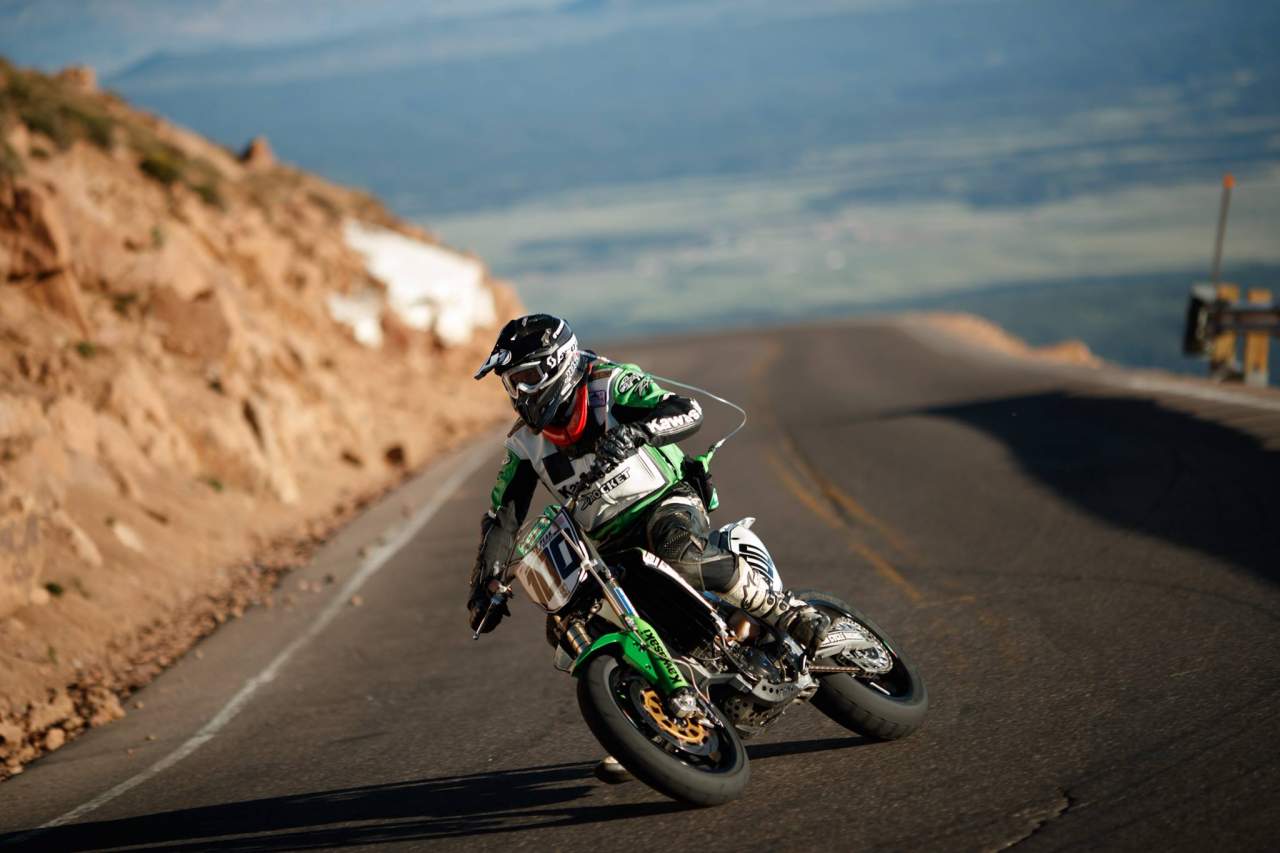
Pikes Peak usually takes place near the end of June due to the location, the weather conditions need to be suitable to help minimize any risks of any injuries. Usually the weather can be very sunny and warm, but could turn cold with rain, snow or fog when hitting the higher heights. It’s common to see lightning storms too. The contest is for both cars and motorcycles, with different divisions in both. Finishing the course is as a big deal as winning or setting a record, just because of the sheer amount of work it takes.
The course
Starting at just 9,390ft above sea level, contestants start at the base of the America’s Mountain to make the drastic race up the mountains to being over 14,000ft above sea level to reach the top of the Peaks. As you can imagine, the course itself is strenuous, both physically and mentally, the further you climb the more obstacles you will ultimately face.
There approximately 156 corners in the climb which keeping up that crucial speed can become tricky. Especially as the air begins to thin, this slows down the riders reflexes and strength, as well as stealing at least 30% of the power of the internal combustion engines! There had not been many changes to the course over the last 100 years, it remained mainly the same until 2002.
However, the City had to resurface due to the gravel being deemed as a risk and violating the Clean Water Act. This was finally completed in 2012, after 10 long years. Although now it means that there are different types of tarmac laid with all of them reacting differently to weathers and temperatures making it a tough in knowing what’s coming next. The race starts around 8am, and can go on until 4pm due to the vast amount of competitors taking part.
PIKES PEAK INTERNATIONAL HILL CLIMB 2020: SUNDAY 28TH JUNE Postponed until August 30th due to COVID-19 restrictions.
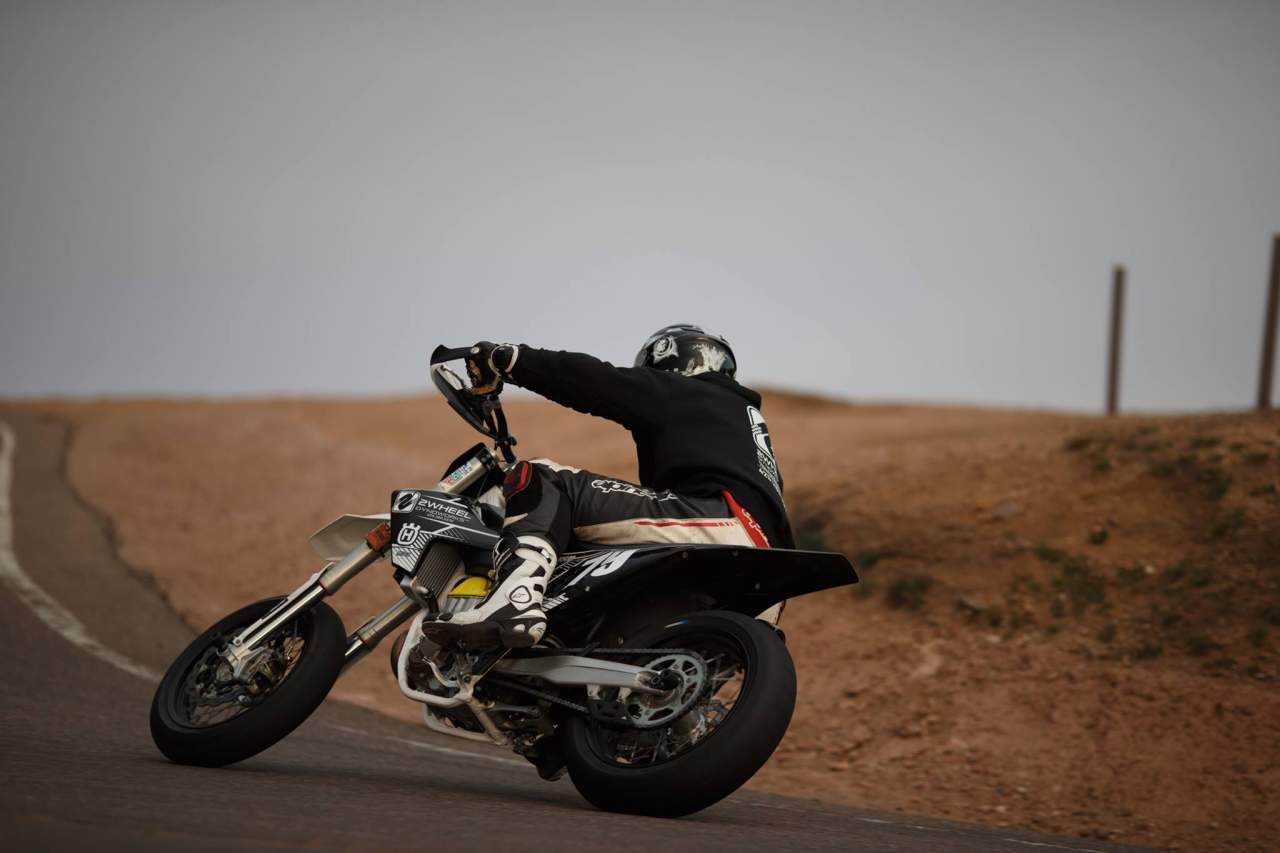
Motorcycle divisions
The motorcycle divisions were added in 2014 to allow for more class and variety of machines to enter the Pikes Peak challenge. Before then, there was only one division for motorcycles.
Pikes Peak Heavyweight Division: This is the top motorcycle division which features the fastest bikes the market has to offer. Current record: Chris Fillmore, 2017 KTM Super Duke 1290 R, 2017 – 9:49.625
Pikes Peak Middleweight Division: Bikes in this class are allowed two or four-stroke engines that don’t exceed four cylinders and have a displacement between 501 and 750cc. Current record: Codie Vahsholtz, 2016 Husqvarna Supermoto, 2017 – 10:34.967
Pikes Peak Lightweight Division: The lightweight division is the place to be if you’re new to the Peaks. Competitors are allowed to enter motorcycles with two or four-stroke engines with no more than two cylinders and a displacement of 500cc. Current record: Davey Durelle, 2009 Aprilia SXV450, 2017 – 10:35.354
Electric Motorcycle Class: This division was born to allow electric motorcycle engineers to showcase their excellence. This is the class where you’ll see technology at its best. Current record: Carlin Dunne, 2013 Lightning Electric Superbike, 2013 – 10:00.694
Pikes Peak Quad Class: Quads fall under the motorcycle division, but even though they have lower top speeds, they can still climb quickly! Current record: Cyril Combes, 2011 Suzuki KTM JF Prototype, 2016 – 11.05.664
Exhibition Powersport Class: This is the class for manufacturers and builders to enter prototype models that don’t fit into the other divisions and classes.
Suzuka 8 hours
History
Born in Japan 1962, the Suzuka circuit has been the home to lots of international competitions such as Formula 1, MotoGP and the Motorbike Endurance World Championships. It was 16 years later that the Suzuka 8 Hours first edition was held at the circuit attracting lots of big biking names over the years including the likes of Graeme Crosby, Wayne Gardner, Eddie Lawson, Noriyuki Haga and Valentino Rossi. 30th July 1978 saw Americans Wes Cooley and Mike Baldwin win the first ever Suzuka 8 Hours for Suzuki Yoshimura.
The race was a prototype for the Tourist Trophy Formula One (TT-F1) in the early days, this meant giving manufacturers unlimited freedom on the track. The race became extremely popular during the 1980s in its prime with over 130,000 spectators; however over the years the attendance has dropped but still sits nicely around 90,000 spectators for the eight hour race. Leon Haslam, Peter Hickman and Jonathan Rea are just a few big British names that take part in the Suzuka 8 hour championship currently.
Circuit
The Suzuka circuit is just 5.821 km, it’s the biggest race in Japan. It was first created as Honda test track in 1962; it’s one of the very few circuits in the world of have a ‘figure of eight’ layout. The circuit has seen modifications over the years, including; a new chicane in the last curve to slow traffic going into the pit straight in 1983.
2002 and 2003 saw some tidying up of chicanes around the circuit to make them faster and smoother, and a reconfiguration after Daijiro Kato was killed during the 2003 Japanese Motorcycle Grand Prix. This saw a second chicane added between the hairpin and 200R. Overall, there are 17 turns in the circuit.
The highest number of laps on the circuit is 219 during the 2002 race. Nothing was left out when designing the circuit; it has its own Amusement Park, Water Park and hotel, its very own motorcycle and automobile school, Suzuka Circuit Racing School and loads of restaurants and the capacity for over 155,000 spectators – you certainly won’t get bored!
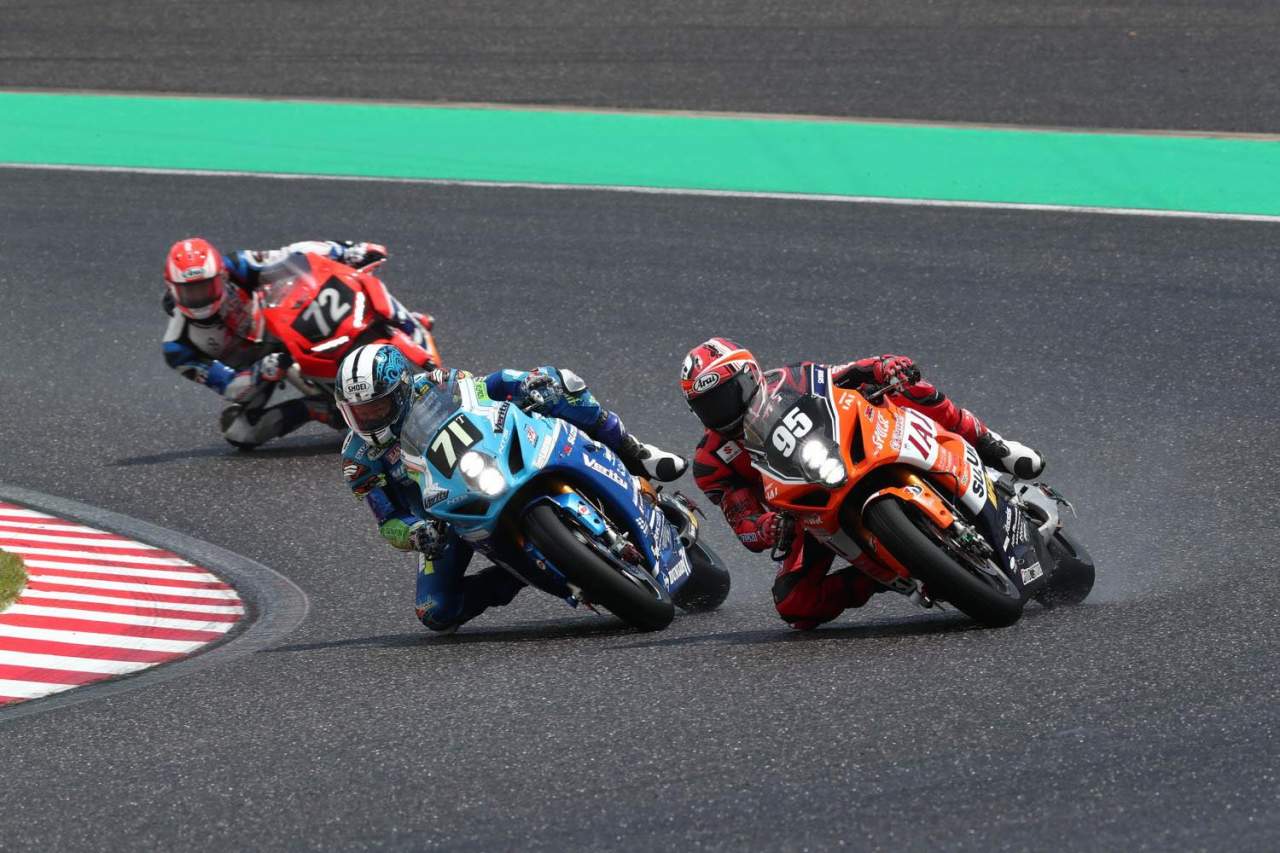
Race
Suzuka 8 Hours is an endurance road race that consists of a race running for eight hours straight, with teams made up of two to three riders alternating turns between pits tops. The weather can be just as testing as the long stints of riding, as it’s held around the last weekend of July and first weekend of August, Japan can have the most intense summers with ridiculously high humidity – riders have to turn to extreme measures to keep cool.
Due to the length of the race, the final hour is taken place under floodlights and headlamps to lead the way for the last battle. Bikes are fitted with illuminated number boards so you can watch them fly round the track with ease. This is the place for the four biggest Japanese motorcycle manufacturers of the world to show off their machines; Honda, Kawasaki, Suzuki and Yamaha, who are constantly battling to prove who the best is.
Currently Honda has the most wins on 27, followed by Yamaha (7), Suzuki (5) and Kawasaki (1) respectively. The FIM imposed a restriction to 750cc for F1 bikes; with the race becoming centered on Superbikes, the Formula One class was soon removed altogether. However another category was introduced for naked motorcycles.
The date in the dairy has always been held so it doesn’t clash with any other international racing due the importance of showing off the most extreme superbike-styled machines, along with other classes including endurance and domestic motorbikes. This is the only race on the calendar where MotoGP stars can race against World Superbike, British Superbikes and lots of other national Japanese racers.
Current records
British racers have been involved in the Suzuka 8 Hours since the very first race, and the last four years have been consecutively won by British riders, namely Bradley Smith, Leon Haslam, Alex Lowes and Jonathan Rea. The 2018 winners, and reigning champions, is the Yamaha Factory Racing Team (Yamaha R1) including Katsuyuki Nakasuga, Alex Lowes and Michael van der Mark for the fourth year in a row. Jonathan Rea smashed the outright lap record, set in 2015 by MotoGP rider Pol Espargaro, during the 2018 qualifier by almost one second, with the new time standing at 2’05.168.
The 2019 Suzuka 8 Hours will begin on Friday 26th July and finishes on Sunday 28th July.
Red Bull Romaniacs
History
The Red Bull Romaniacs is one of the fairly newer endurance rallies on the scene, founded back in 2004 by Martin Freinademetz. This 600km enduro race is simply one of a kind. Martin Freindaemetz was born with the ultimate passion for sports, especially those of the endurance kind; with his professional career as a snowboarder and numerous medals and titles to his name, he and his wife Sigi created the Red Bull Romaniacs challenge.
Each year the race has gone from strength to strength, growing in numbers and the challenges faced by each competitor differ each year. No matter how many times you’ve participated, none of them will ever be the same.
Race
Four ‘off-road’ race days run on the most stunning but testing enduro trails in Romania. Everybody is truly challenged to their limits, regardless if you’re professional or amateur it pushes the word ‘enduro’ to another level. Competitors can enter into four different classes; Iron, Bronze, Silver and Gold. Gold being the hardest of the four categories, the spaces for all fill up within a matter of hours after release. But be warned, even entering the Iron class won’t be your average endurance challenge – be prepared for everything and anything!
Picking the right class can mean the difference between becoming a Red Bull Romaniac legend or a complete waste of time. Classes are based on physical fitness, riding technique ability and racing experiences.
The classes
Gold:
- Professional class
- One of the World’s top 100 Extreme Enduro Riders, or top ranked rider in the World Enduro Championship, or have a solid background in Trials
- Not only that, your physical fitness, mental stability, and pain threshold need to be world class too
- Next level course requirements, not achievable for humans
Silver:
- High scored in national Enduro Championship, with plenty of Extreme Enduro experiences
- Trial techniques will be useful
- Physical fitness, mental stability and pain threshold should be excellent
Bronze:
- Good results and plenty of enduro racing experience
- Technical skills will be needed!
- Your physical fitness, mental stability and ability to deal with pain will need to be trained and tested – recovering quickly will be necessary especially as you’ll be riding through terrains you’ve not imagined before
Iron:
- Not ready to hit Bronze just yet? Iron is the class for you.
- Prolog is voluntary but will help with your starting position
- Single trails with a variety of conditions, and lots of obstacles like trees, steps and water crossings
- You won’t need to hit the gym everyday but you physical and mental fitness should still be good
- You must have completed a few enduro weekends or local competitions to prepare
Check out the Iron class in action…
If you’re thinking about taking part in the Red Bull Romaniacs then remember if you enter in the wrong class, you’ll either struggle to keep up or you will be flying through, it’s best to do plenty of research beforehand!
The actual race
The Prolog
It begins with the Prolog, the results of this race determine the starting order for the following days off-road race. This gives all competitors the chance to warm up and get a glimpse of what the Romaniacs is really like. For those who are unable to finish or start this phase will be given a 15 minute time penalty ahead of the first real off-road day.
Off-Road Days (1 – 4)
The next four days of racing will be like no other, the course crosses mountain areas into hills and valleys; lots of rocky ground to tackle with as much tarmac and paved roads avoided as possible. There are technical parts to the challenge as well seeing competitors having to navigate themselves of natural obstacles including fallen trees, up and along boulders and even through muddy swamps. Each part of the course varies in length for 100km to 180km per day, this can depend on what class you’ve entered in.
Fuel stops are every 70km so it’s important for competitors to make sure they’ve got enough juice to get to the right stop. Competitors are also given the chance to have a quick rest-bite, grab a drink before heading back into the unknown! Although the course is sign-posted and colour marked for competitors, they also have the route loaded on to GPS for safety. All routes are test ridden by Freinademet to be approved and checked that, although they are challenging, they are safe. This means there no unexpected surprises for competitors and they can truly enjoy the experience, as much as they can!
Winners
Brit Graham Jarvis won the rally six times and is now the most successful rider in the event’s history, followed by Frenchmen Cyril Despres and Brit Jonny Walker. It’s not surprise that KTM has been the dominate manufacturer winner over the years, they know off-road and enduro bikes like no other, however Husqvarna have become a force to be reckoned with in recent years.
The 2019 Edition of the Red Bull Romaniacs falls from Tuesday 30th July to Friday 3rd August.
Mongol Rally
History
The Mongol Rally is organised by The Adventurists, originally as an intercontinental car rally throughout Europe all the way to Ulan Bator, Mongolia but this was changed recently to Ulan Ude in Russia due to the high costs associated with taxes, vehicle import and disposal. The rally launches from different locations around the UK including Hyde Park, Goodwood Circuit and Battersea Park, but with subsidiary starting points in the Czech Republic for 2018.
The first Mongol Rally took place in 2004 with just 6 teams taking part; only 4 of these completed it. However, only a year later and the figures flew to 43 teams signing up and 18 vehicles arriving in Ulan Bator. The whole purpose of the rally was to raise money for charity, although its run and organised by private company the League of Adventurists International Ltd, it is still a requirement to raise money for charity, through sponsorship, to take part.
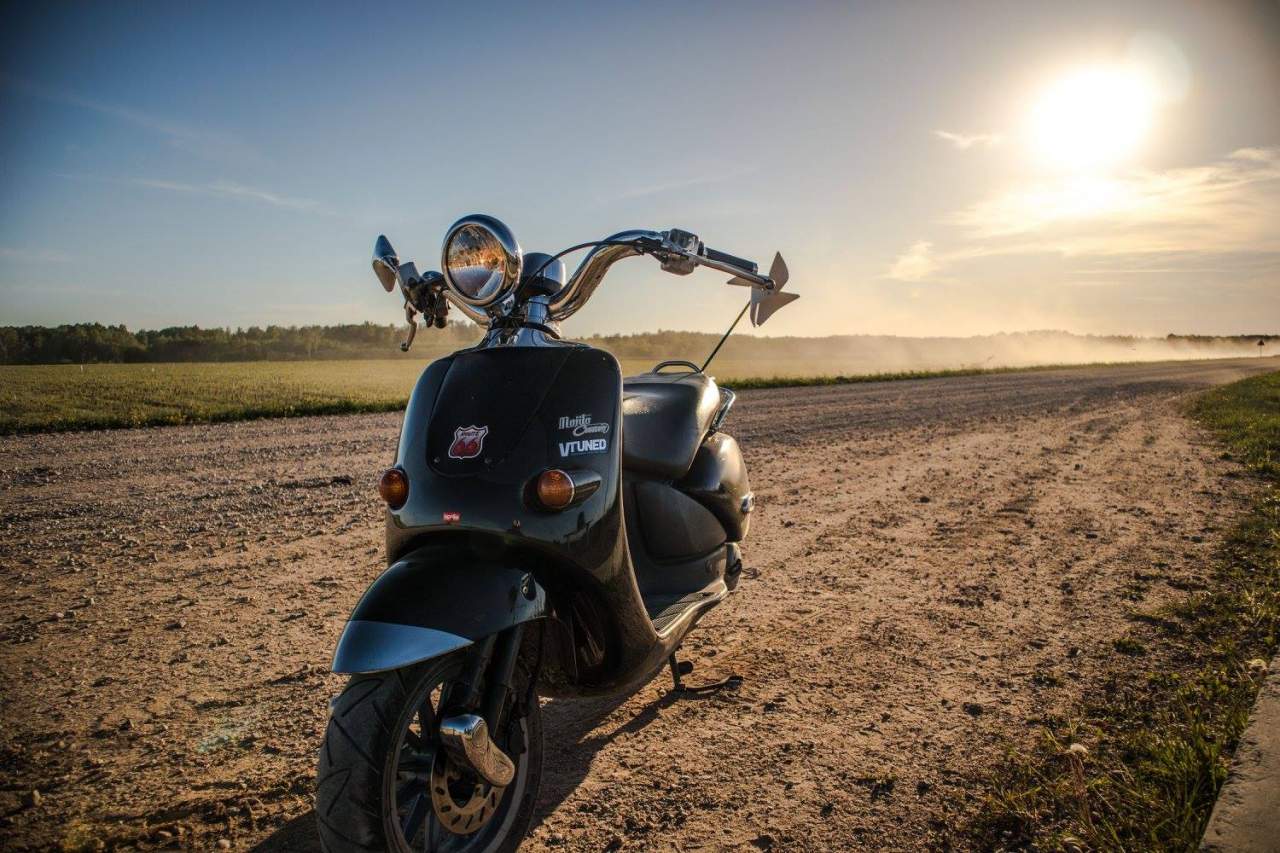
Rules
Originally just a car only rally, the rules stated that cars had to be under 1000cc with no age limit, however as the years passed by the rules have changed due to import restrictions; for example, 2013 Mongolian import restriction meant that vehicles had be less than five years old. This new rule became a struggle for entrants as they couldn’t find the right car on a budget – it wasn’t long until this rule was dissolved. Now the rule stands that cars of any age are allowed to take part, under 1000cc engine and must be removed after the event.
The race was opened to motorcycles and scooters of upto 250cc only. The key is to buy the cheapest, smallest car possible to make the rally even tougher for you because there’s just no point if you turn up all kitted out to win? Unlike other rallies and endurance races on the scene, the Mongol Rally is like no other. There are basically three fundamental rules:
- Rally vehicles have a 1200cc engine limit (250cc for motorcycles and scooters)
- Rally teams are unsupported
- Rally team need to raise at least £1000 for charity
Oh, and don’t forget that racing is illegal on a lot of highways throughout the rally!
Costs
Entry-fee does apply to both cars and motorcycles, for bikes its just £325 and this includes a whole host of things:
- Entrance fee to Mongol Rally
- Access to untold amounts of knowledge and experience before the rally begins
- Tracking and blogging system so you can shout about your progress
- Launch party entrance
- Entry to the biggest European rally party
- Oh, and entry to the finishing party (if you make it or not!)
- “Route Beers” regular meet ups ahead of the Rally
- Mongol Rally t-shirt
- Ultimate bragging rights
However, other costs you’ll have to pay out for, on top of your entrance fee include:
- Your vehicle
- Vehicle insurance and personal travel insurance
- Travel to and from the start and finish line
- Fuel, repairs, accommodation and other on-road living costs
- £1000 charity donation (this can be done through sponsorships)
- Jabs and injections
- The other important stuff like visas and paperwork
- Refundable deposit £1200 – just to make sure you don’t dump your vehicle and do a runner!
To enter as a car team, the fee is £695.
Race
There’s no set route across the thousands of miles across Europe and Asia’s mountains, deserts and everything else you could possible think of. It’s time to ditch the ABS, pick up the trusty map and then start driving. Usually teams are made up of two to four members, no support crew or marked pit stops or refuelling stations, as soon as you cross the starting line you’re completely alone. All your given is a starting point and a finishing point, you have to make the rest up in between; you could see some true wonders of the world.
The day before the official race start day there is a launch party, this usually falls in the middle of July, and the next day sees the launch ceremony with all these weird and wonderful vehicles taking on the ultimate challenge. The finish line opens a month later, around the middle of August, and remains open until the middle of September.
Over the weeks vehicles start slowly arriving over the finish line, so with their cars and motorcycle fully working and intact, and other aren’t so lucky. On average, there’s only a 70% completion rate for the Mongol Rally and that tells you just how tricky this rally can be.
The 2019 Mongol Rally launches on Monday 22nd July with competitors finishing between mid August to September.
Erzbergrodeo
It all began back in 1994, Andreas Werth (REITWAGEN magazine editor) and Karl Katoch (editor of Motorrad-Reporter) acted together to create the Erzbergrodeo, an off-road endurance event like no other. They birthed one of the greatest motorcycling events in the world that still to this day, brings thousands of competitors from across the globe to compete in a challenge that most of them will not even cross the finish line. It started off with just a mere 120 riders heading towards the peak of the Iron Mountain, but just a year later and that number double, the Erzbergrodeo bug was catching!
What made it so enticing to riders? Well, it’s the toughest dirt bike competition there is. Werth and Katoch knew they needed to fed the hungry appetite of enduro riders and they succeeded; with a mixture of endless hilled battles, impossible woods and never-ending gravel straights – it’s truly testing for both man and machine!
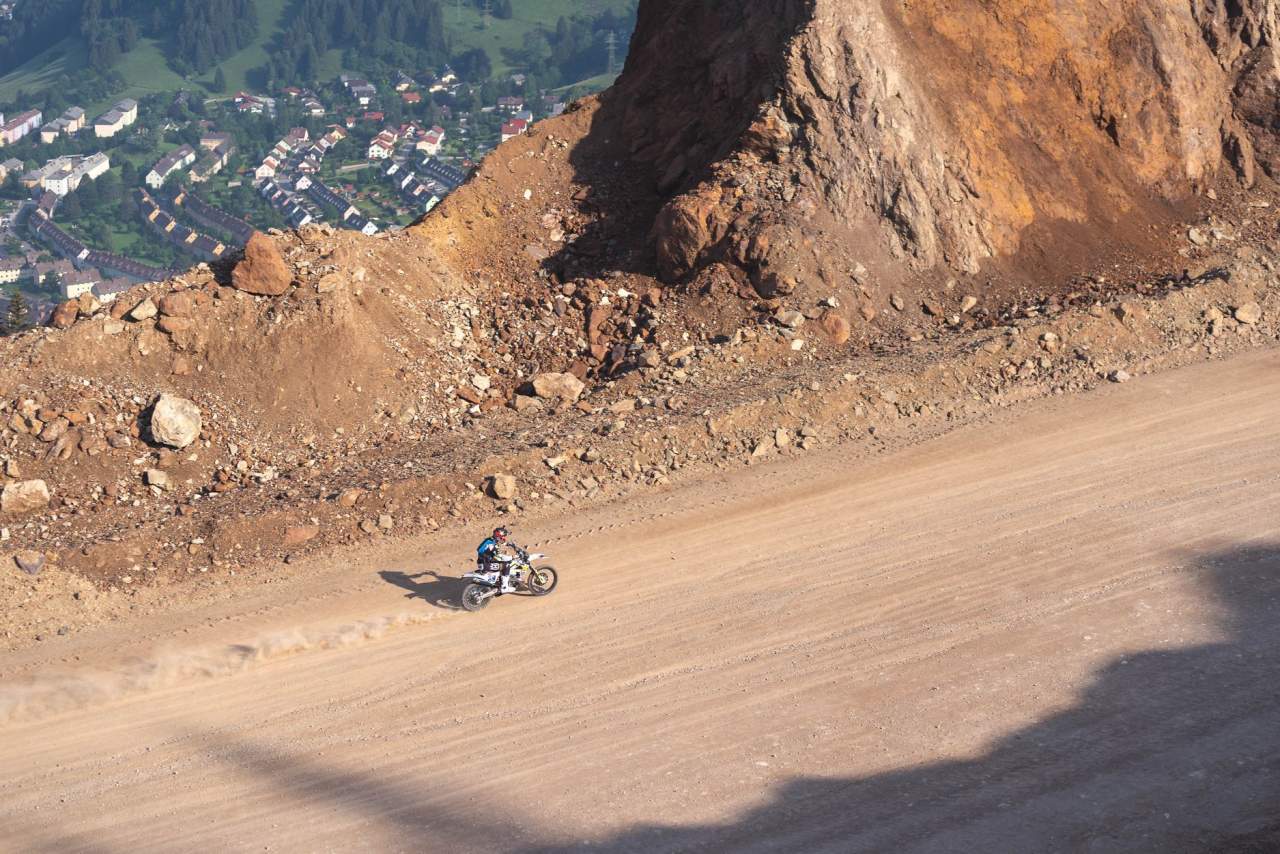
Usually only a few competitors would complete the course in just four hours, although they would come back battered and bruised, pushed mentally and physically – but the satisfaction of completing the Erzebergrodeo is like no other; it’s worth the blood, sweat and tears. In 1996, the Iron Road Prologue was introduced; this created even more attraction to the race.
By 1999, 1,000 competitors were lining up at the beginning of the Iron Road with spectators and fan littering the surrounding areas, even if you weren’t into motorcycling it still had the attraction to many. 2011 saw Erzbergrodeo hit an all-time high with the 1500 spaces selling out in just five hours; participants from over 37 different nations and 5 continents traveled to take part in the most epic off-road rally of all times, Katoch and his crew decided this would be one that would go down in endurance history. It’s not surprise that when entry opened for the following year, it only took 49 minutes to completely sell out for the 18th edition.
Races
Four day event consists of numerous different events whittling down the best riders for the ultimate finale, Red Bull Hare Scramble. As you can imagine, this is the dream for lots of international off-road racers so it’s no surprise that lots of them have taken part including; Cyril Despres, Chris Pfeiffer, Jonny Walker and more!
Iron Road Prologue
Friday and Saturday – This is the qualify racing for Sunday’s ‘Red Bull Hare Scramble’ but only 1,500 can partake with starts going in 20 to 40 second intervals starting from 9am throughout the day. The Iron Road is a 13km long gravel path that goes into the vicinity of the summit.
Different classes for this race include:
- Desert Bomber
- Street Bikes
- Scooters and Mopeds
- Women’s Class
- Standard singles (street legal, single cylinder enduro)
- Quads
Rocket ride
All you’ve got to do is hold the throttle wide open and climb, simple right?! The Rocket Ride is a hill climb like no other. Erzabergrodeo launched this race back in 2009 and it was a hit straight away, With 300 bikers lined up to start, they have conquer the 3-story hill as quickly as possible. The race takes on a motocross style, each group is sent out in 6’s but only the fastest three riders will reach the next round. Each rider has two attempts to reach the Superfinals, which only host 48 spaces to fight out for the Rocket Ride trophy!
Red Bull Hare Scramble
Sunday race, the top 500 races from the Prologue are eligible to start. There is a new route every year, so there’s no chance of any advantage no matter how many times you’ve taken part in the race. The 35km route should take around one to two hours for the real pros but it’s unlikely that more than 30 riders will return within the first four hours.
There’s more than just racing…
It’s not all about racing either, Erzberg host the ‘RAID OVER ERZBERG’ which happens on the Friday evening seeing the peaceful town become littered with bikers and fans from all over the world. It’s one of the best and wackiest street parties you’ll ever encounter!
The 2019 edition starts on Wednesday 29th May and finishes on Sunday 2nd June.
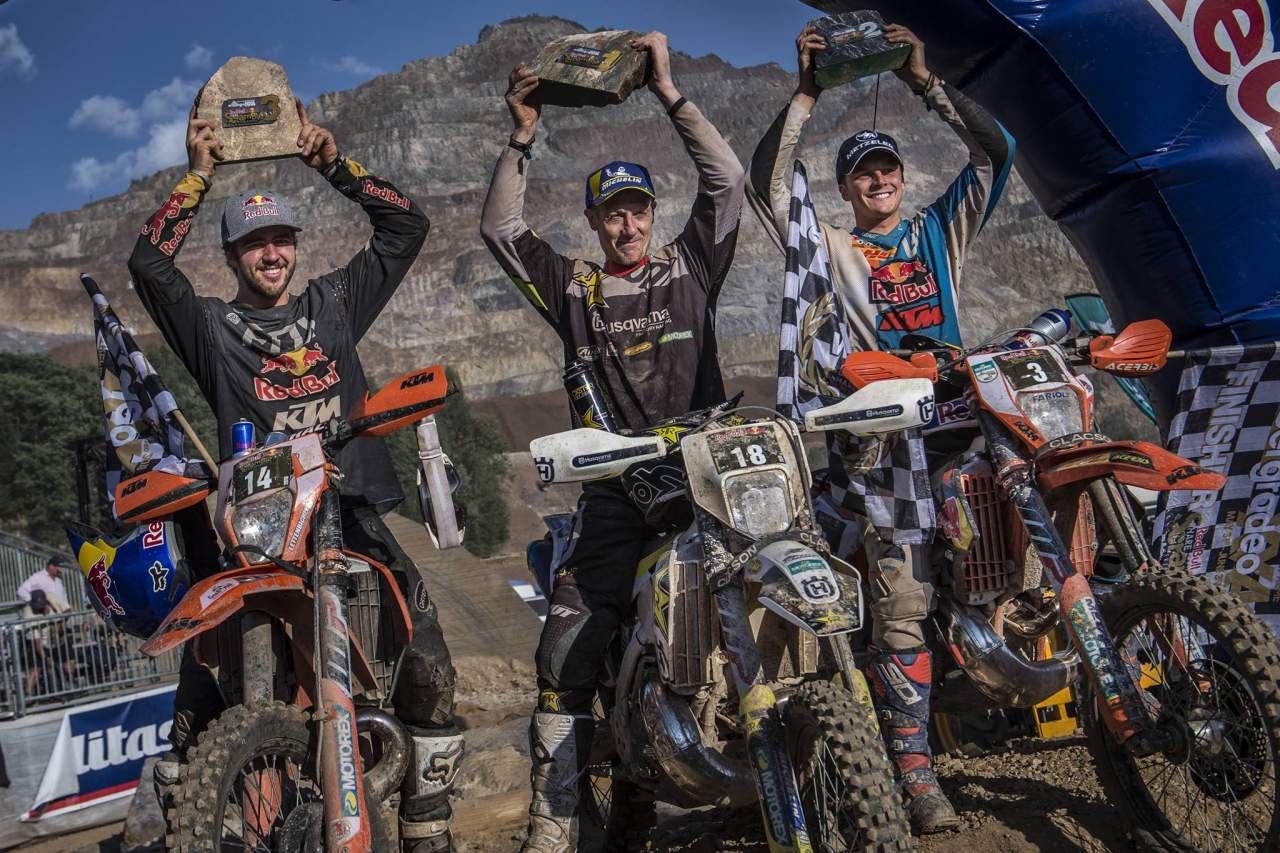
24 Hours of Le Mans
History
Founded in 1978, 24 Heures Motos (24 Hours of Le Mans Motorcycle Race to the rest of us) is an extremely popular motorcycle endurance race held at the Bugatti Circuit in France. Bugatti Circuit was born in September 1966, with the first edition of the 24 Heures Motos taking part on 22nd and 23rd April 1978. The race continues to take place over the same weekend every year. Over the years the circuit has seen some tweaks Kawasaki has been the dominant manufacturer over the years taking over 13 wins, closely followed by Suzuki and Honda on 12 then Yamaha on 4 wins.
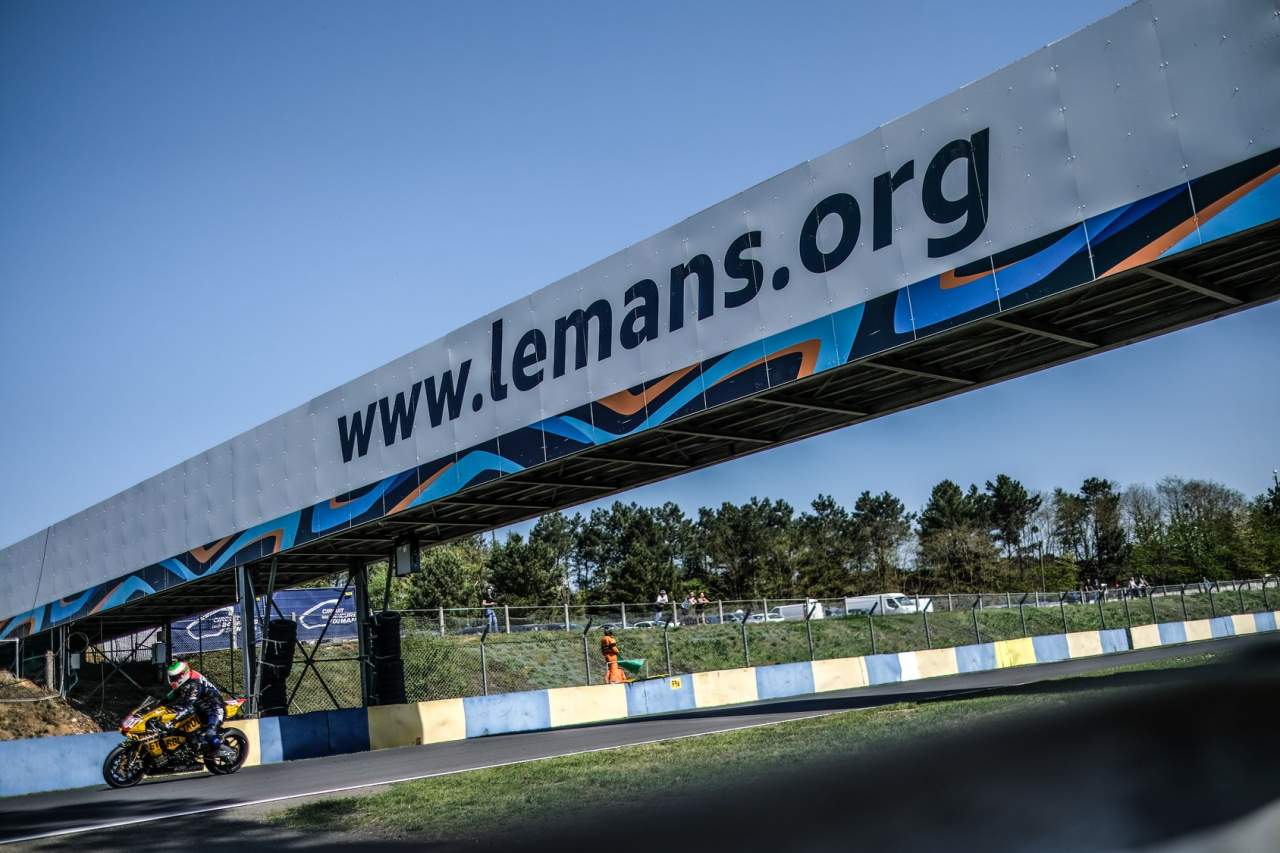
Circuit
The Bugatti Circuit plays host to the 24 Hours of Le Mans motorcycle race, it’s still located within the Circuit des 24 Heures (this where the main car race takes place) but this course is shorted making it perfect for motorcycling races, including hosting a round of the MotoGP championship. The circuit is 4.273km with 14 turns, the current lap record Maverick Vinales set in 2017 at 1:32.309. The current
Race
The race format sees 4 days of racing, with the final day being the 24 hour stint (hence the name). The circuit is only 4.185km with the best lap time of 1’36.408 on a Kawasaki ZX-10R by Rany De Puiet in 2017. Thursday starts with free practice sessions, then the first qualifying group session and night practice session. These sessions are important to make final tweaks to the bikes and for the riders to mentally prepare themselves for the challenge ahead. Friday sees the second qualifying practice session then the Superpole.
After a warm-up session on Saturday morning, the race starts promptly at 3pm. The race starts with all the bikes on the grid but the riders at the edge of the track to race on to get to their bike when the klaxon is sounded. There we are, 24 hours later then race comes to a close and the prize-giving ceremony begins.
2020 LE MANS 24 HOURS: Saturday 13th – Sunday 14th June. Postponed until Saturday 19th – Sunday 20th September due to COVID-19 restrictions.
Rules
There are three different classes of motorcycles that can take part in the 24 hour races. All have different specifications.
Formula EWC
Formula EWC is the top category for Le Mans. The machine cannot to be altered too much for the original model. Changes to the fork, damper, swing arm, brakes, radiator and exhaust can be done provided they are of the same type as the original model. There is also a certain degree of freedom to make changes to increase engine performance. The specification as follows:
- Minimum weight: 175 kg
- Up to 1000cc for 3 and 4-cylinder models
- Up to 1200 cc for 2-cylinder models
- Headlamp with a white light beam
- Black number plate background
Superstock
Modifications to the Superstock models are extremely limited, especially in terms of the mapping of the electronic fuel injection units. The engine must retain its original configuration. Changes that are allowed include: reinforcing the clutch, changing of air filters, silencer, and internal part of the forks, rear suspension unit, countershaft sprocket and rear wheel sprocket. Other modifications include mounting a steering damper and quick-fill device for refuelling.
The specification is as follows:
- Minimum weight: 168kg
- Up to 1000cc for 3 and 4-cylinder models
- Up to 1200 cc for 2-cylinder models
- Headlamp with a yellow light beam
- Red number plate background
Experimental
As you can guess from the name of this category, this class is for those machines that have been modified beyond the regulations. These Experimental machines appear in the general classification of the race, but will not qualify for Endurance World Champion points. However, they may compete in the race is the Selection Committee deem the machine to be innovative and to have technical interest.
Electric machines are also eligible for this class. The specification is as follows:
- Minimum weight: 165kg
- From 600 cc to 1000 cc for 4-cylinder models
- From 750 cc to 1350 cc for 3-cylinder models
- Headlamp with a yellow light beam
- Green number plate background
